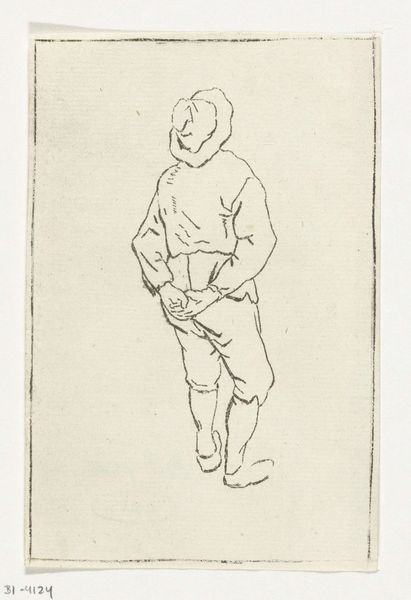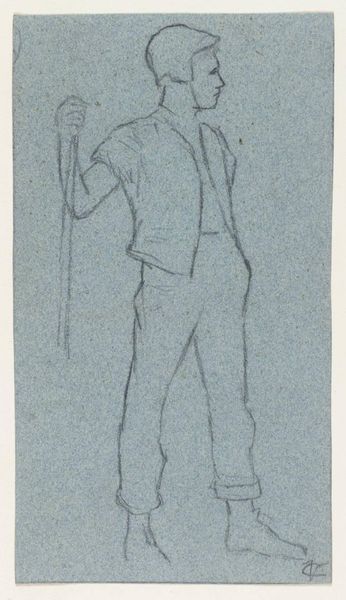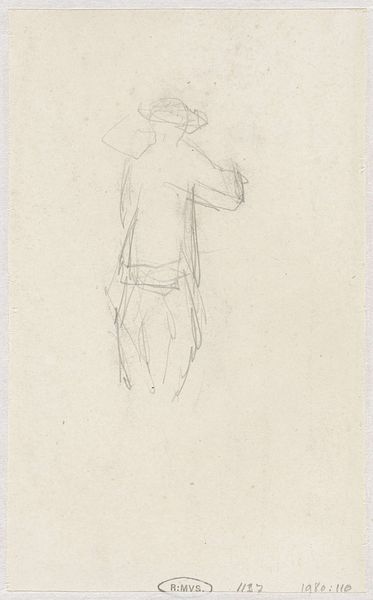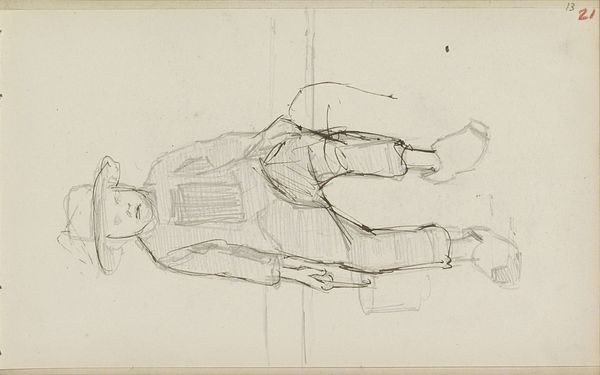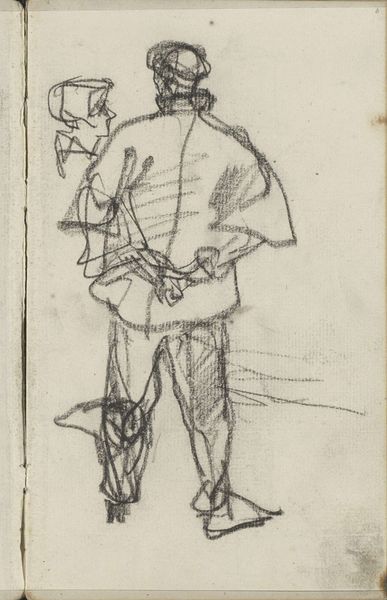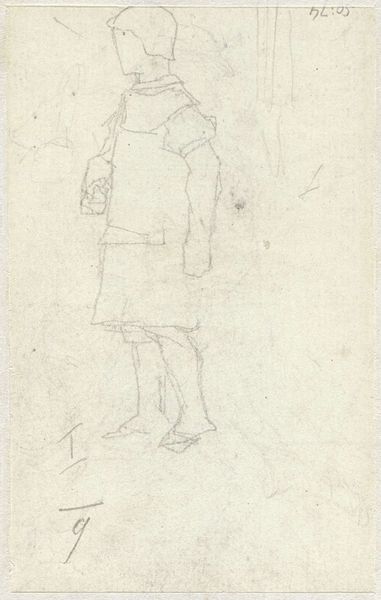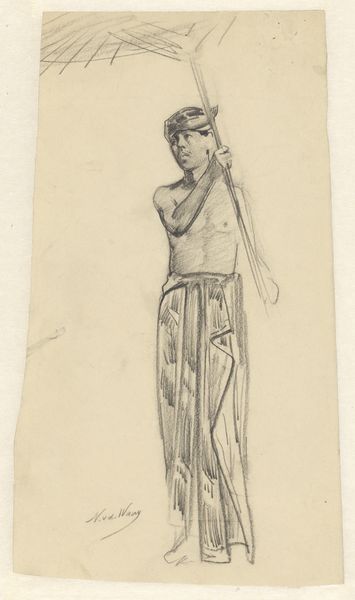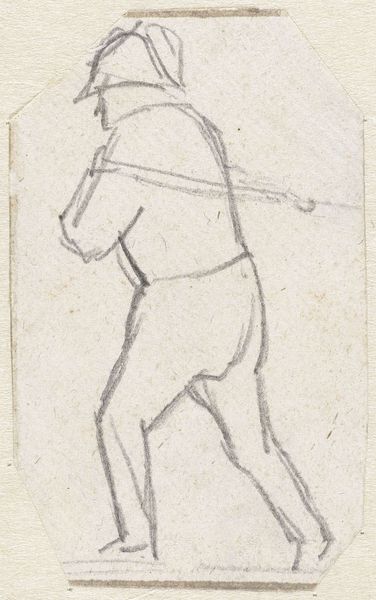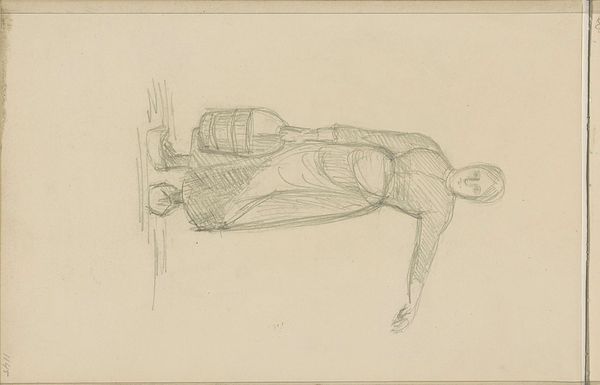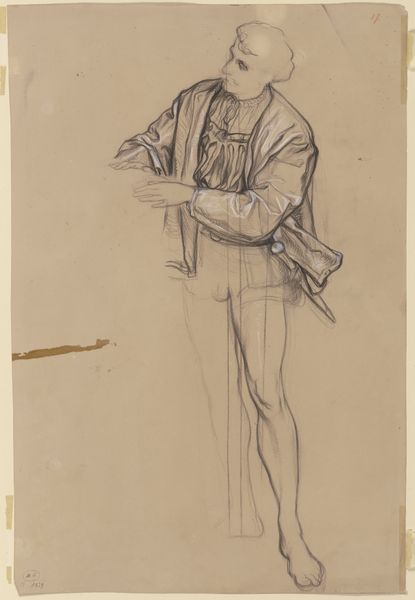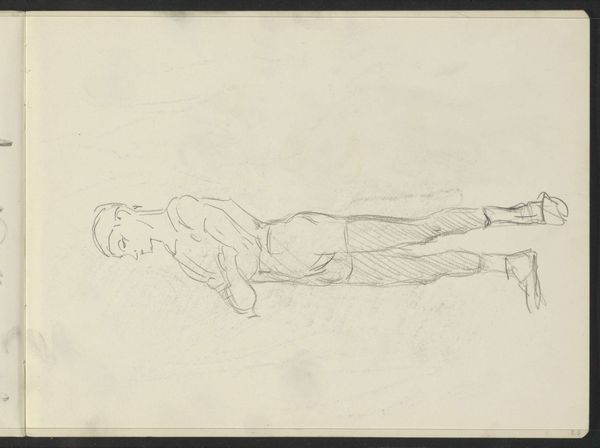
drawing, paper, pencil
#
portrait
#
drawing
#
pencil sketch
#
figuration
#
paper
#
pencil
#
sketchbook drawing
#
genre-painting
#
realism
Dimensions: height 235 mm, width 145 mm
Copyright: Rijks Museum: Open Domain
Editor: We're looking at "Standing Boy with a Spade" by Jozef Israëls, created sometime between 1834 and 1911. It’s a pencil drawing on paper. The mood is quite somber, don’t you think? He looks almost burdened. What catches your eye in this seemingly simple sketch? Curator: The spade isn’t just a tool; it's an emblem, particularly potent when placed in the hands of a child. Consider the symbolism of earth, of toil, of the cycle of life. In Israëls' time, such imagery connected deeply with notions of peasant life, of an inherent link to the land. But does the boy embrace it or is he stoically enduring it? Editor: That’s an interesting perspective. I just saw it as a kid with a gardening tool, but now that you mention it, he's not exactly smiling. It feels heavier, somehow. Do you think Israëls intended that somber reading? Curator: It’s a question of memory and cultural association. For Israëls and his audience, this image would have carried immediate associations – poverty, the dignity of labor, the realities of rural existence. Does the way he leans on the tool suggests a premature aging or burden? Editor: So it’s less about a specific message from the artist and more about tapping into collective feelings connected to these images? Curator: Precisely. The symbol resonates because it touches shared anxieties, values, and understanding. And this understanding shifted over time, too. A viewer today might see it through a completely different lens of labor laws or child welfare. It's this evolving dialogue with symbols that make them so powerful. What do you make of the hat and clothing? Editor: They do seem very old-fashioned, reinforcing that sense of another time. This discussion has really opened up my eyes to the deeper meanings that everyday objects can carry. Curator: Indeed. Visual symbols echo across generations.
Comments
No comments
Be the first to comment and join the conversation on the ultimate creative platform.
